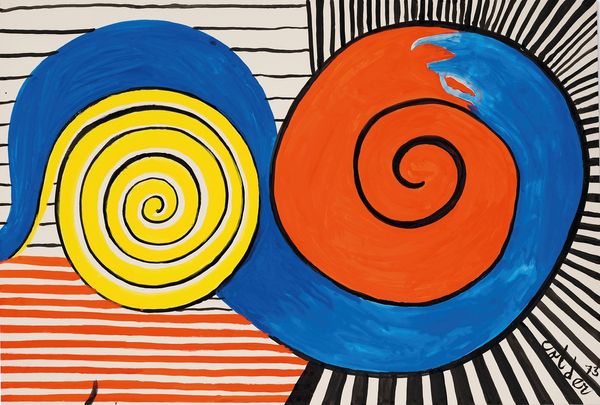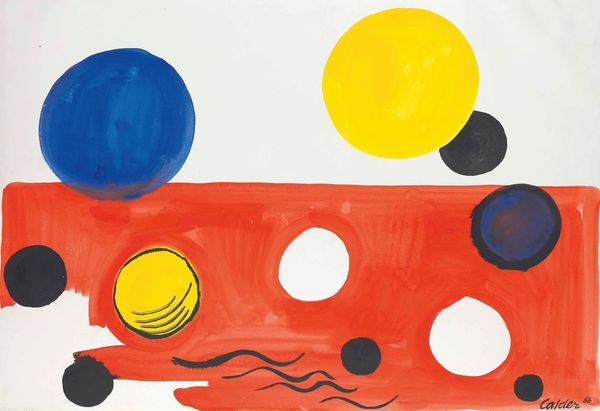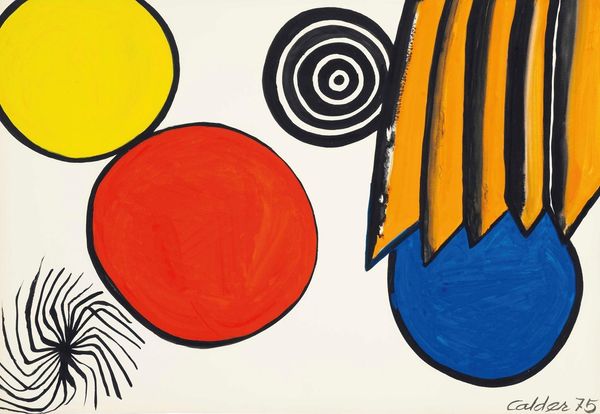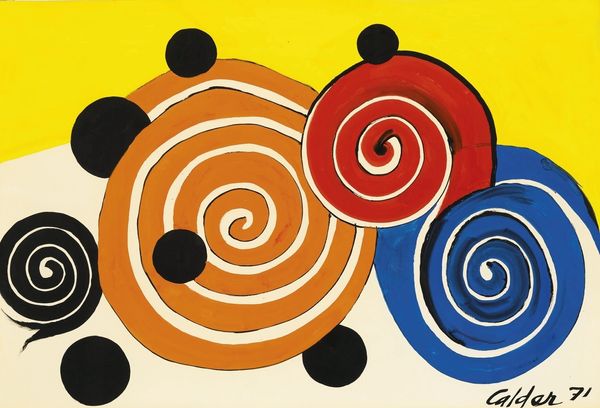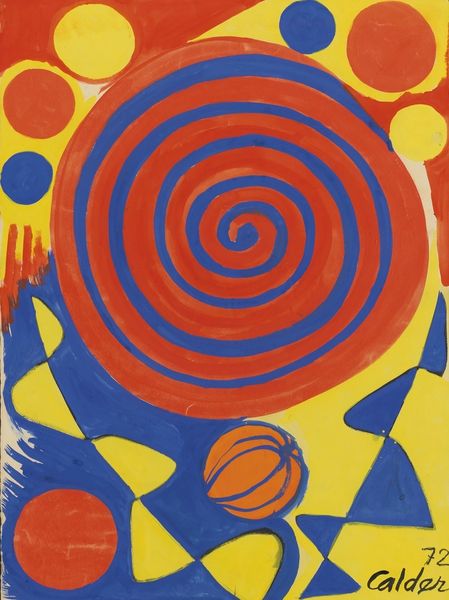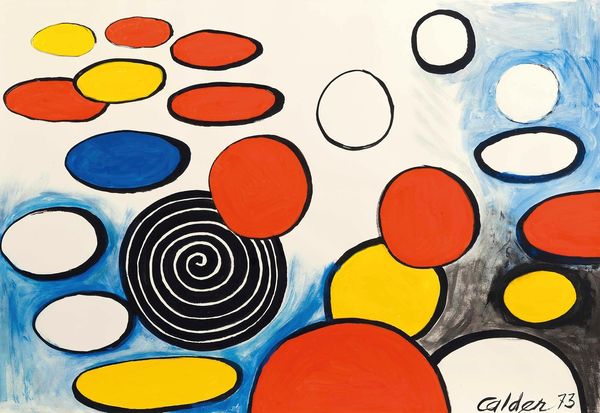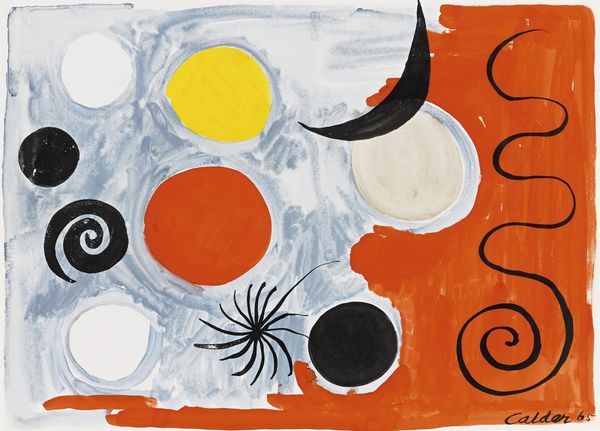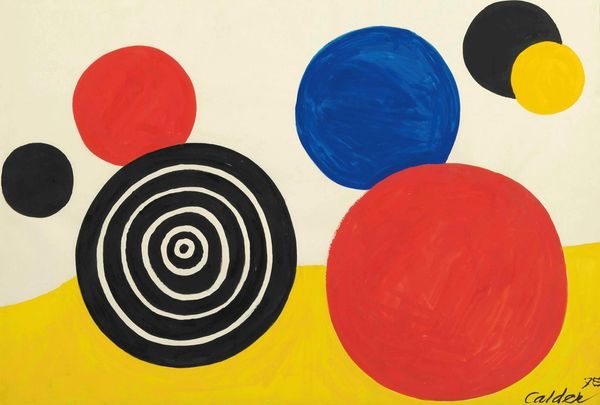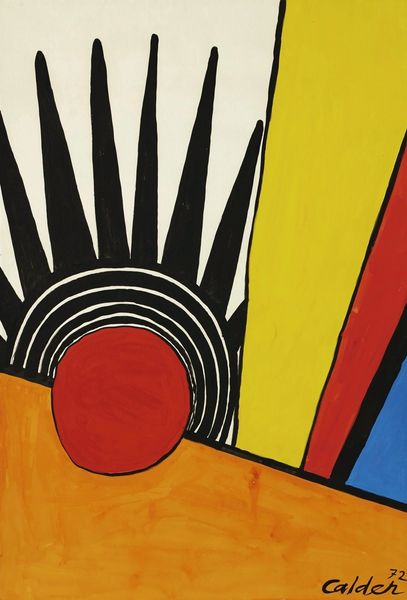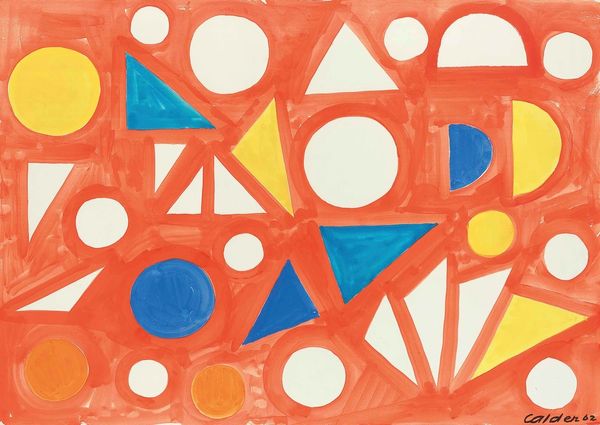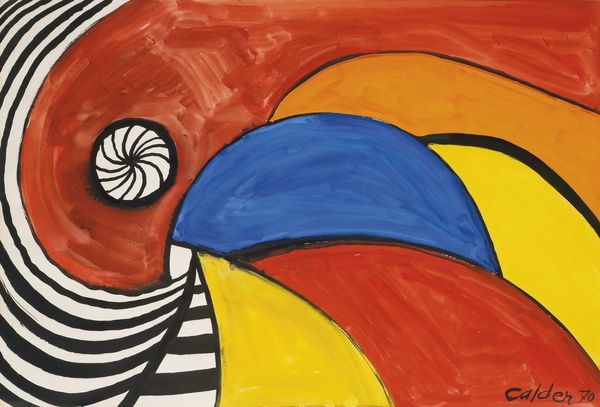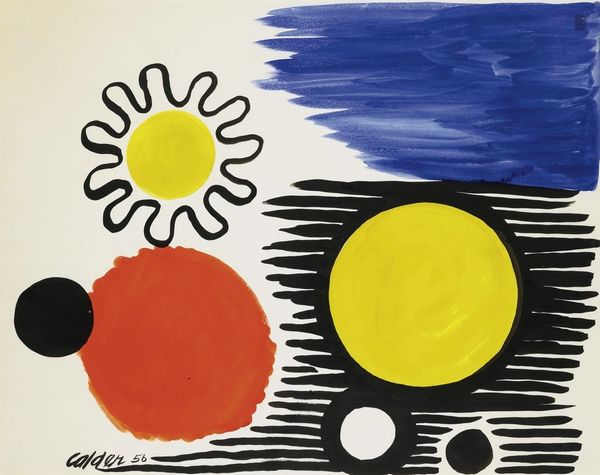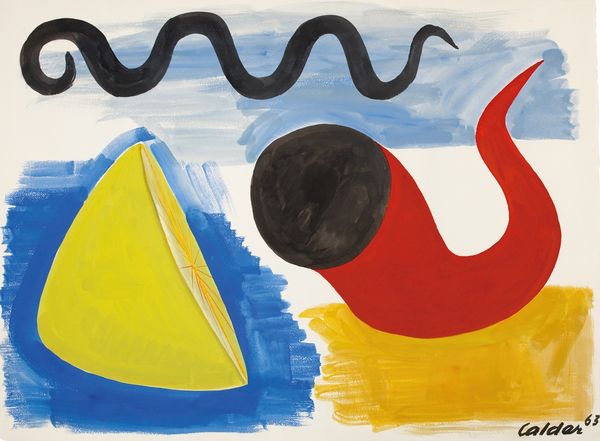
painting, acrylic-paint
abstract-expressionism
abstract painting
painting
pop art
acrylic-paint
abstract
geometric
modernism
Copyright: Modern Artists: Artvee
Curator: Alexander Calder's "Striped Sphere," created in 1962 using acrylic paint, presents a playful composition that demands our attention. Editor: Indeed. My immediate reaction is that it's so whimsical! The palette, those floating geometric shapes… it’s almost like a child’s dreamscape. Curator: Let's begin by focusing on the spatial relationships. Notice how the spheres aren't just placed, but orchestrated—creating a visual rhythm. The cool blue contrasts sharply against the warmer yellows and oranges. Do you perceive a deliberate push and pull, spatially? Editor: Absolutely, the tension between the colours intensifies the symbolic weight of those spheres. Circles often represent totality, the self, the sun… the varied decoration upon them also provokes me: we have a solar burst of rays, spiralling figures perhaps indicating inward contemplation. I wonder, is Calder suggesting diverse interpretations of selfhood? Curator: That is an astute observation. And if we analyze Calder's treatment of line—the horizontal brushstrokes underlying the blue, versus the clean delineations of the spheres—we see two very distinct languages at play. This tension introduces depth, and dare I suggest, destabilizes any easy reading. It becomes less saccharine once you acknowledge the underlying abstract qualities. Editor: True. Beneath the initial cheerfulness, there's a primal energy. Look at the black amoebic shapes at the base. Those could symbolize anything from primordial life to unseen shadows, and I think its their placement at the base of the painting that speaks to that notion. Their presence complicates that ‘dreamscape’ narrative significantly. Curator: And those elements effectively ground the artwork, providing a sense of structural integrity amid the apparent randomness. By the early sixties, the geometric and abstract vocabularies were well established... it's intriguing to note how Calder here reframes this vocabulary toward his more celebrated mobiles. Editor: Calder infuses these otherwise rather commonplace forms with layers of meaning and nuance. The work isn’t just a formal exercise, but also an exploration of fundamental, nearly Jungian symbols and, if my reading holds merit, their endless recombinations in the formation of identities. Curator: A truly potent mix. Reflecting on our conversation, I appreciate how his construction challenges fixed notions of form, material, and symbolic content. Editor: For me, seeing those joyful shapes intertwining with undercurrents of a more contemplative inner life has been a wonderful revelation!
Comments
No comments
Be the first to comment and join the conversation on the ultimate creative platform.
